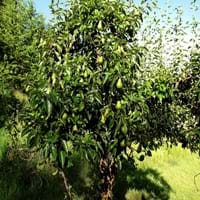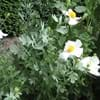Life Span
Perennial
Perennial
Origin
Europe, Western Asia
California
Types
Green Anjou, Red Anjou, Bartlett
Not Available
Number of Varieties
Not Available
Habitat
Humid climates, moist forests
Chaparral, River side
USDA Hardiness Zone
3-8
7-10
Sunset Zone
2a, 2b, 3a, 3b, 4, 5, 6, 7, 8, 9, 14, 15, 16, 17, 18
H1, 4, 5, 6, 7, 8, 9, 10, 11, 12, 14, 15, 16, 17, 18, 19, 20, 21, 22, 23, 24
Habit
Oval or Rounded
Upright/Erect
Minimum Width
Not Available
Flower Color
White
White, Yellow
Flower Color Modifier
Not Available
Bicolor
Fruit Color
White, Yellow, Red, Green, Yellow green
Green, Tan
Leaf Color in Spring
Light Pink, Red, Green, Light Green
Gray Green
Leaf Color in Summer
Dark Green
Gray Green
Leaf Color in Fall
Purple, Dark Green, Burgundy
Gray Green
Leaf Color in Winter
Light Green
Light Green
Leaf Shape
Oval with a pointed tip and fine teeth along their edges
Lance shaped
Plant Season
Early Spring, Winter
Spring, Summer
Sunlight
Full Sun
Full Sun
Type of Soil
Loamy, Sandy
Loam, Sand
The pH of Soil
Acidic
Neutral, Alkaline
Soil Drainage
Well drained
Well drained
Bloom Time
Fall, Summer
Early Spring, Spring, Late Spring, Early Summer, Summer
Tolerances
Drought
Drought
Where to Plant?
Ground
Ground
How to Plant?
Grafting, Seedlings
Cuttings, Seedlings
Plant Maintenance
Low
Medium
Watering Requirements
Medium, Water less during winter, Water more in summer, when new, water every week
Needs watering once a week, Water well when planted
In Summer
Lots of watering
Lots of watering
In Spring
Moderate
Moderate
In Winter
Average Water
Average Water
Soil pH
Not Available
Neutral, Alkaline
Soil Type
Not Available
Loam, Sand
Soil Drainage Capacity
Not Available
Well drained
Sun Exposure
Full Sun, Partial Sun
Full Sun
Pruning
Remove damaged leaves, Remove dead branches, Remove dead leaves
prune nearly to the ground in late fall
Fertilizers
Ammonium Nitrate, Fertilize the soil before planting
organic fertlizers
Pests and Diseases
Red blotch
Verticillium Wilt
Plant Tolerance
Drought
Drought
Flower Petal Number
Single
Single
Showy Foliage
No
Not Available
Foliage Texture
Medium
Not Available
Foliage Sheen
Glossy
Not Available
Attracts
Aphids, Birds, Butterflies, Pear psylla
Bees, Birds, Butterflies
Allergy
Anaphylaxis, Digestive Problems, Itchiness, Swelling
no allergic reactions
Aesthetic Uses
Cottage Garden
Showy Purposes
Beauty Benefits
Good for skin, Improve skin tone, Making cosmetics, Moisturizing, Skin Problems
Not Available
Environmental Uses
Air purification, Shadow Tree
Air purification
Medicinal Uses
Cancer, Cardiovascular problems, cholesterol-lowering, Detox, Diabetes, Energy, Fiber, Heart problems, High blood pressure, Obesity, Treating diverticulosis, Weight loss
antimicrobial, Astringent, Gum Problems, Stomach pain
Part of Plant Used
Bark, Fruits, Leaves
Flower Stalk
Other Uses
Used As Food
Used as Ornamental plant
Used As Indoor Plant
No
No
Used As Outdoor Plant
Yes
Yes
Garden Design
Not Available
Feature Plant, Groundcover, Mixed Border, Wildflower
Botanical Name
PYRUS communis
ROMNEYA coulteri
Common Name
Pear
Matilija Poppy
In Hindi
नाशपाती
Matilija Poppy
In German
Birne
Matilija Poppy
In French
Poire
Matilija Poppy
In Spanish
Pera
Matilija amapola
In Greek
Αχλάδι
Matilija παπαρούνας
In Portuguese
Pera
Matilija Poppy
In Polish
Gruszka
Matilija Poppy
In Latin
Orbis
Matilija Poppy
Phylum
Vascular plant
Magnoliophyta
Class
Magnoliopsida
Magnoliopsida
Order
Rosales
Papaverales
Family
Rosaceae
Papaveraceae
Clade
Angiosperms, Eudicots, Rosids
Angiosperms, Eudicots
Tribe
Maleae
Not Available
Subfamily
Amygdaloideae
Papaveroideae
Properties of Pear and Matilija Poppy
Wondering what are the properties of Pear and Matilija Poppy? We provide you with everything About Pear and Matilija Poppy. Pear has thorns and Matilija Poppy doesn't have thorns. Also Pear does not have fragrant flowers. Pear has allergic reactions like Anaphylaxis, Digestive Problems, Itchiness and Swelling and Matilija Poppy has allergic reactions like Anaphylaxis, Digestive Problems, Itchiness and Swelling. Compare all the properties and characteristics of these two plants. Find out which of these plant can be used as indoor plant. If you are interested to decorate your house and garden, find out aesthetic uses, compare them and select the plant which will beautify your surrounding. Along with beautification, try comparing medicinal and edible uses of Pear and Matilija Poppy and you can choose the plant having best and most benefits.
Season and Care of Pear and Matilija Poppy
Season and care of Pear and Matilija Poppy is important to know. While considering everything about Pear and Matilija Poppy Care, growing season is an essential factor. Pear season is Early Spring and Winter and Matilija Poppy season is Early Spring and Winter. The type of soil for Pear is Loamy, Sandy and for Matilija Poppy is Loam, Sand while the PH of soil for Pear is Acidic and for Matilija Poppy is Neutral, Alkaline.
Pear and Matilija Poppy Physical Information
Pear and Matilija Poppy physical information is very important for comparison. Pear height is 1,219.20 cm and width 800.00 cm whereas Matilija Poppy height is 120.00 cm and width Not Available. The color specification of Pear and Matilija Poppy are as follows:
Pear flower color: White
Pear leaf color: Light Pink and Red, Green, Light Green
Matilija Poppy flower color: White and Yellow
- Matilija Poppy leaf color: Gray Green
Care of Pear and Matilija Poppy
Care of Pear and Matilija Poppy include pruning, fertilizers, watering etc. Pear pruning is done Remove damaged leaves, Remove dead branches and Remove dead leaves and Matilija Poppy pruning is done prune nearly to the ground in late fall. In summer Pear needs Lots of watering and in winter, it needs Average Water. Whereas, in summer Matilija Poppy needs Lots of watering and in winter, it needs Average Water.





